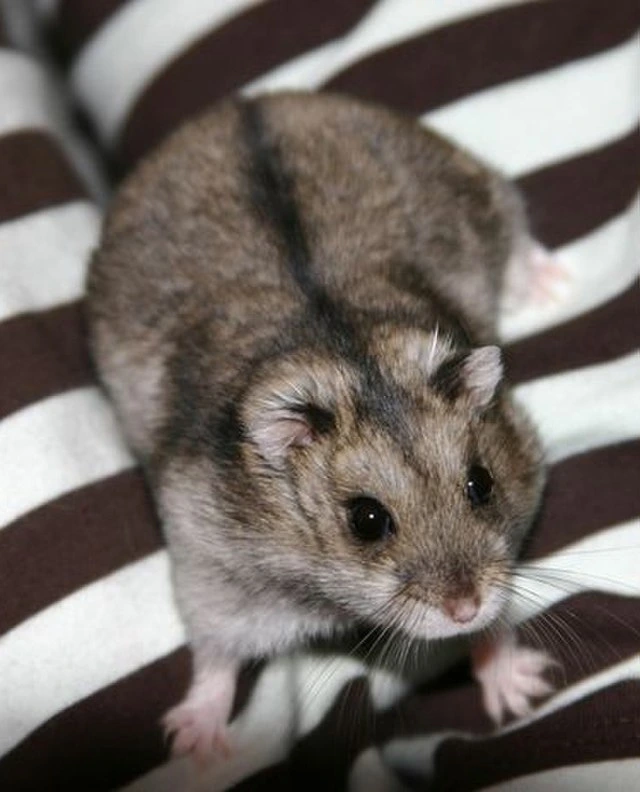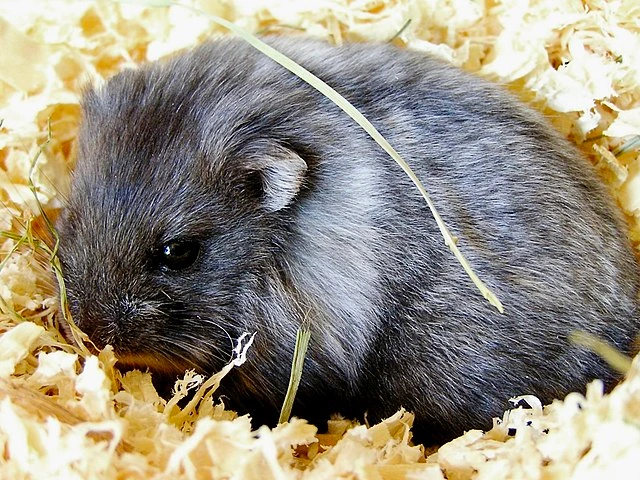Campbell’s Dwarf Hamsters, also known as Phodopus campbelli, are small, adorable creatures that make fantastic pets for people of all ages. They are often confused with their close cousins, the Russian Dwarf Hamsters, but these guys have a charm of their own. With their charming looks and playful nature, they’ll surely win your heart in no time. Let’s explore their unique traits, care requirements, and how to keep them happy and healthy.
Meet the Dwarf Hamster: Small but Mighty!
Campbell’s Dwarf Hamsters are one of the smallest domesticated hamster species, originally hailing from Central Asia. Here are some fun facts about these little critters:
- Size: These tiny furballs only grow up to 4 inches in length, making them perfect for folks who don’t have a lot of space.
- Appearance: Campbell’s Dwarf Hamsters come in a variety of colors and patterns, with the most common being the “wild” or “agouti” coloration, which features a grey-brown coat with a black dorsal stripe.
- Social nature: Unlike their larger Syrian cousins, Campbell’s Dwarf Hamsters can be kept in pairs or small groups, as long as they’re introduced at a young age and are of the same sex to avoid any unexpected litters.
Setting Up Your Dwarf Hamster’s Home
Size and Type of Cage
Even though they’re small, Campbell’s Dwarf Hamsters still need a spacious and secure home. A minimum cage size of 24 x 12 x 12 inches (LxWxH) is recommended, but bigger is always better for extra playtime and exploration. Glass aquariums with mesh lids or wire cages with solid plastic bases are the cat’s meow, providing good ventilation and easy cleaning. Just make sure the cage has closely spaced bars (no more than 1/4 inch apart) to prevent any daring escapes.
Bedding
Your dwarf hamster will love burrowing and nesting in a thick layer of bedding. Aspen shavings, paper-based bedding, or shredded, unscented tissues are all recommended.
Nesting Area
Create a snug nesting area for your hamster, like a hideout or a small cardboard box filled with extra bedding material. This gives them a sense of security and a comfy spot to catch some ZZZs.

Diet & Nutrition
Campbell’s Dwarf Hamsters can enjoy a variety of foods, but it’s essential to know what they can and cannot eat to ensure a healthy diet.
What Campbell’s Dwarf Hamsters Can Eat
- Hamster Food Mix: Provide a high-quality commercial hamster food mix as the foundation of their diet. This mix usually contains a blend of seeds, grains, and pellets that provide essential nutrients.
- Fresh Vegetables: Introduce a variety of fresh vegetables to their diet, such as broccoli, carrots, cucumber, peas, bell peppers, and leafy greens.
- Fruits: Offer small amounts of fruits like apples (without seeds), pears, bananas, blueberries, and strawberries occasionally, as they are high in sugar.
- Protein: Campbell’s Dwarf Hamsters can benefit from additional protein sources, such as cooked, unseasoned chicken or turkey, as well as insects like mealworms or crickets.
What Campbell’s Dwarf Hamsters Cannot Eat
- Chocolate and Sweets: These are toxic and unhealthy for hamsters.
- Onions and Garlic: These can cause digestive issues and are toxic to hamsters.
- Raw Beans or Potatoes: These can be harmful to hamsters when consumed raw.
- Citrus Fruits: Avoid fruits like oranges or lemons, as they are too acidic for hamsters.
- High-Fat Nuts: Almonds and other nuts high in fat should be avoided, as they can lead to health issues.
- Spicy or Seasoned Foods: These can cause digestive problems and are not suitable for hamsters.
Remember to always provide fresh water daily for your Campbell’s Dwarf Hamster and monitor their eating habits to ensure a well-balanced diet.

Keeping Your Campbell’s Dwarf Hamster in Tip-Top Shape
Campbell’s Dwarf Hamsters are energetic and active creatures, requiring regular exercise to maintain their physical and mental well-being. In this section, we’ll explore various ways to ensure your hamster stays in tip-top shape through physical activity and mental stimulation.
Exercise Wheel
An exercise wheel is a must-have accessory for any hamster cage. It allows your Campbell’s Dwarf Hamster to run and expend energy whenever they please. Choose a solid or mesh wheel rather than one with rungs, as this can prevent injuries to your hamster’s feet or legs. The wheel should also be large enough for your hamster to run comfortably without arching its back.
Playtime Outside the Cage
Allowing your hamster to explore outside its cage is an excellent way to provide both physical exercise and mental stimulation. Create a secure play area using a playpen, large plastic storage container, or even a dry bathtub. Add toys, tunnels, and hiding spots to encourage exploration and play. Always supervise your hamster during playtime to ensure their safety.
Climbing Opportunities
These Dwarf Hamsters are natural climbers, and providing opportunities for them to climb can help keep them physically fit. Add climbing toys, such as wooden ladders or branches, to their cage to encourage this natural behavior.
Foraging and Puzzle Toys
In the wild, hamsters spend a significant amount of time foraging for food. Encourage this natural behavior by providing puzzle toys or hiding treats around their cage or play area. This will not only keep your hamster physically active but also provide mental stimulation and enrichment.
Health & Lifespan
Campbell’s Dwarf Hamsters are generally healthy animals, with a lifespan of around 1.5 to 2.5 years. With proper care, a well-balanced diet, and regular vet check-ups, they can live life to the fullest. However, they can be prone to certain health issues, such as diabetes, dental problems, and respiratory infections.
Common Health Issues
Diabetes: Diabetes is a relatively common issue in Campbell’s Dwarf Hamsters, with around 10% of the population potentially affected[2%5E]. To minimize the risk of diabetes, it’s crucial to maintain a proper diet and avoid high-sugar foods. If you suspect your hamster has diabetes, consult a veterinarian for further advice and treatment.
Dental Problems: Like all rodents, Campbell’s Dwarf Hamsters have continuously growing teeth. To prevent dental issues, provide your hamster with chew toys or wooden blocks to help wear down their teeth. Regularly check their teeth for overgrowth and consult a veterinarian if you notice any issues.
Respiratory Infections: Respiratory infections can be caused by a variety of factors, such as poor air quality, drafts, or an unclean living environment. To prevent respiratory issues, keep your hamster’s cage clean and well-ventilated, and avoid placing it in drafty areas.
Veterinary Care
Find a vet who’s well-versed in small animals, preferably one who specializes in exotic pets. Regular check-ups can catch potential health issues early on. If you notice any signs of illness or changes in behavior, don’t hesitate to call your vet.
Bonding
Regular handling can help build trust between you and your Campbell’s Dwarf Hamster, as well as provide additional opportunities for exercise. Start by allowing your hamster to explore your hands in their cage, then gradually progress to holding and interacting with them outside the cage. Be gentle and patient, as it may take time for your hamster to become comfortable with handling.
Interaction with Other Pets
Keep your hamster’s cage in a calm and secure spot, away from other pets like dogs and cats, which can stress them out and pose a threat to their safety. Always keep an eye on any interactions between your hamster and other pets, and never leave them alone together.
